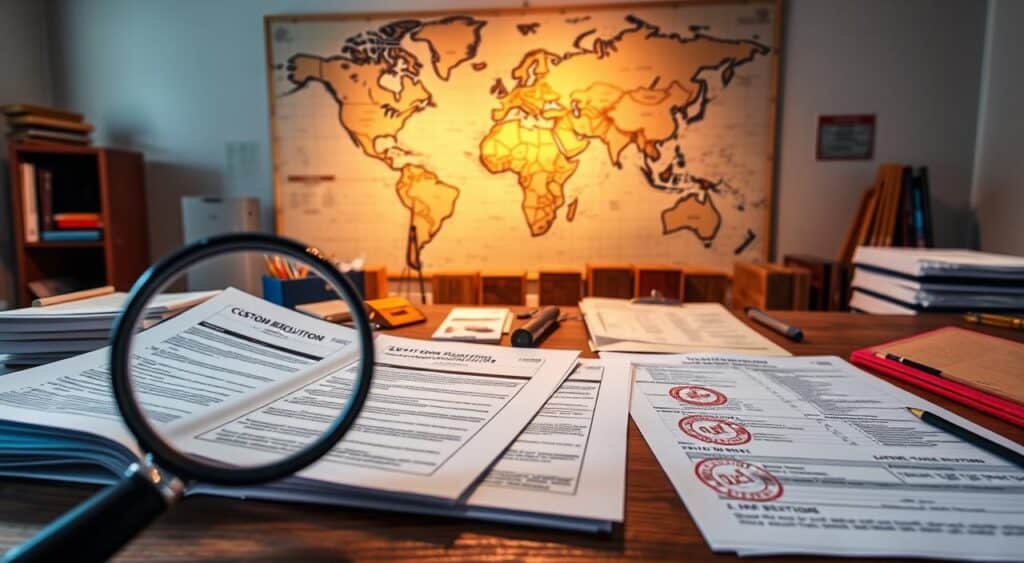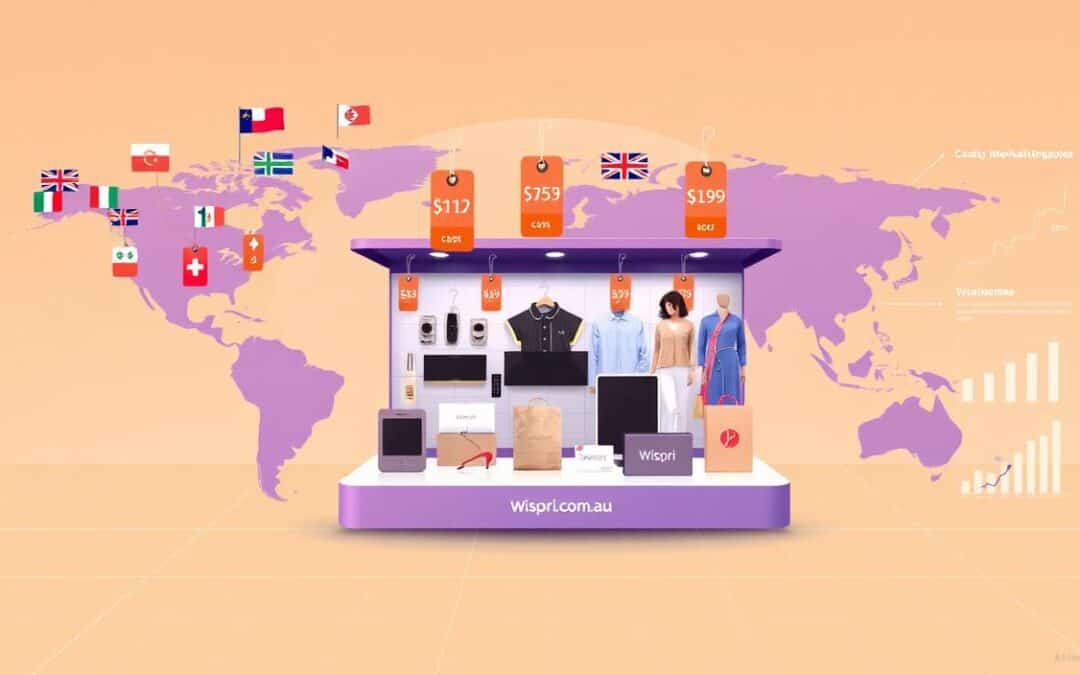Did you know Aussie shoppers lose an average of $1,200 yearly by mistiming purchases? Or that 73% of online “sales” don’t actually discount products? Navigating global purchases can feel like a minefield, but getting it right unlocks unique items and savings you won’t find locally.
This guide cuts through the confusion. You’ll learn how duties, taxes, and hidden fees impact your total spend. We’ll break down currency conversions, shipping costs, and customs rules so you can avoid nasty surprises. Plus, discover how tools like price trackers help you spot genuine deals and time purchases perfectly.
Whether you’re eyeing limited-edition gear or everyday essentials, understanding the true costs changes everything. No more guessing games – just smart strategies to stretch your dollar further.
Key Takeaways
- Hidden fees like GST and import duties can add 10-20% to your order total
- Currency conversion rates vary between providers – check before paying
- Some retailers include taxes upfront, while others charge at checkout
- Price tracking tools help identify genuine discounts versus marketing tricks
- Always compare total costs (product + shipping + taxes) against local prices
Insights into International Shopping Regulations
Ever wondered why two identical orders from overseas can have wildly different final costs? The answer lies in how countries apply their customs duties and taxes. Let’s unpack what really happens when your parcel arrives Down Under.

Understanding Duties and Taxes
Australia calculates customs charges using three factors: your item’s classification code, its declared value, and any active trade deals. For example:
- A $300 leather handbag from Italy might attract 5% duty under a Free Trade Agreement
- The same bag from a non-FTA country could face 10% duty plus 10% GST
Our de minimis threshold sits at AUD$1,000 – orders below this usually avoid duties. Compare this to Canada’s CAD$40 limit for courier goods, and you’ll see why checking thresholds matters.
Navigating Import Restrictions and Exemptions
Some surprises aren’t welcome. Did you know:
- Electronics might need Australian compliance certificates
- Vitamin imports over 3 months’ supply require permits
“Always check the Australian Border Force website before ordering specialty items – it’s quicker than dealing with seized parcels.”
Returning residents get personal exemptions (AUD$900 for adults), but these don’t apply to online purchases. Use the official duty calculator to estimate costs before checkout.
Navigating Customs Clearance and Payment Methods
How many times have you tracked a package only to see it stuck at customs? Understanding the final hurdles ensures your goods arrive smoothly. Let’s break down what happens after your parcel lands in Australia.
Essential Payment Options for Customs
When duties apply, you’ll need to pay before your items clear. The Australian Border Force accepts:
- Credit/debit cards (Visa, Mastercard, Amex)
- Electronic funds transfer
- Cash (AUD only at designated offices)
| Payment Method | Accepted Forms | Processing Time | Receipt Provided? |
|---|---|---|---|
| Credit Cards | Visa, Mastercard, Amex | Instant | Yes |
| Debit Cards | EFTPOS, Visa Debit | Instant | Yes |
| Electronic Transfer | BPAY, Direct Deposit | 1-2 business days | Email confirmation |
Documents and Declarations Simplified
Proper paperwork prevents holdups. You’ll typically need:
- Commercial invoice showing item value
- Proof of payment (receipts/bank statements)
- Import permits for restricted goods
Customs brokers can handle complex shipments – useful for items over $1,000 or specialty products. Track your parcel using the Integrated Cargo System (ICS) number provided by your courier.
Pro tip: Upload digital copies of documents to the Customs Management Portal before arrival. This cuts processing time by up to 48 hours for express shipments.
Understanding Cross-Border Shopping: Duties, Taxes, and More
What if your bargain turns into a budget nightmare? Hidden charges can turn that great deal into a financial headache. Let’s crack the code on true pricing for global purchases.

Calculating Total Costs Effectively
Start with this formula: Product price + shipping + insurance + taxes = real cost. Miss one element, and you’re flying blind. Here’s what smart shoppers track:
| Cost Factor | Typical Range | Smart Tip |
|---|---|---|
| Duties & Taxes | 5-20% of item value | Use Australia’s official duty calculator |
| Currency Fees | 1-3% bank charges | Compare rates on Wise vs PayPal |
| Shipping Insurance | $5-$50+ | Essential for items over $200 |
| Return Costs | Up to 70% of item price | Check retailer’s return policy first |
“Tools like Wispri let you track prices across borders in real-time – no more guessing if today’s ‘sale’ is actually cheaper than last week’s offer.”
Exchange rates matter more than you think. A 2% bank fee on a $500 order adds $10. Pair that with a weak AUD day, and suddenly local options look better.
Pro tip: Canada’s $20 duty-free limit shows why checking thresholds matters. Australia’s $1,000 de minimis helps, but courier fees often apply below that. Always compare total landed costs – not just website prices.
Maximising Savings with Advanced Price Tracking Tools
Ever tracked a product for weeks only to miss its lowest price? Modern tools remove the guesswork. Platforms like Wispri analyse pricing patterns across 50+ retailers, giving Aussies real power in global markets.
![]()
How Wispri Streamlines Price Monitoring
Wispri’s AI scans major Australian stores and international sellers simultaneously. It spots genuine discounts versus marketing tricks – like that “70% off” claim on headphones that’s actually 2% cheaper than last month.
| Feature | Basic Version | Wispri PRO |
|---|---|---|
| Retailers Tracked | 15+ | 50+ including global stores |
| Price History | 3 months | 2 years |
| Alerts | Email only | SMS + app notifications |
| Currency Conversion | Basic rates | Real-time FX updates |
Set custom alerts for specific items. Want a Japanese coffee machine under $600 including shipping? Wispri tracks exchange rates and delivery costs too.
Benefits of Wispri PRO for Savvy Shoppers
PRO users see hidden trends. Last Christmas, Harvey Norman’s mixer prices spiked 22% before “sales”. Wispri’s data showed better deals at Bunnings two weeks later.
The dashboard compares local and overseas options clearly. For example:
- An Officeworks printer: $489 AUD
- Same model from US site: $312 + $87 shipping
“PRO’s historical graphs help me buy electronics when the AUD strengthens against the USD – saved $217 on my last laptop.”
Free users get basic tracking, but PRO’s multi-currency support and retailer blacklists prevent false “bargains”. Try the 14-day trial during peak sales seasons for maximum impact.
Strategies for Shipping, Returns, and Delivery Times
Your global purchase experience hinges on smart shipping choices and return planning. Let’s explore how to balance speed, cost, and reliability when getting items to your doorstep.
Choosing Reliable Shipping Options
Not all carriers deliver equal value. Compare these popular services for Australian addresses:
| Service Type | Avg. Delivery | Cost Range | Tracking Included? |
|---|---|---|---|
| Express | 3-7 days | $25-$75 | Yes |
| Standard | 10-15 days | $15-$40 | Yes |
| Economy | 20-30 days | $8-$25 | Sometimes |
Package forwarding services like ShopMate can slash costs for multiple orders. They combine parcels from US stores into single shipments, often cutting international shipping fees by 30-50%.
Managing Returns and Avoiding Extra Costs
Returns become pricey when shipping overseas. Always check:
- Who covers return postage?
- Is there a restocking fee?
- How long is the return window?
“I saved $87 by emailing measurements to a UK retailer first. Their size charts didn’t match Aussie standards!”
Delivery times vary wildly. Express options work for birthdays, but economy shipping suits replaceable items. Track parcels through the retailer’s portal and Australia Post’s delivery network.
Pro tip: Add 25% buffer time to estimated delivery times during holidays. This prevents panic when gifts arrive December 24 instead of 18th.
Useful Tips and Best Practices for International Purchases
Global deals can feel like hidden treasure – if you know where to dig. Savvy Aussies unlock better prices and unique products by mastering two key skills: promotion hunting and currency smarts.
Smart Promotion Strategies
Timing matters more than you think. Japanese retailers often slash prices during Golden Week (April-May), while US stores offer pre-Christmas deals in early November. Sign up for retailer newsletters – many send exclusive discount codes before public sales.
Payment methods impact your savings. Compare these options:
| Payment Type | Exchange Rate | Fees |
|---|---|---|
| Travel Credit Cards | Interbank rate | 0% foreign fee |
| Multi-Currency Accounts | Live rates | $2-5 transfers |
| PayPal | Markup +3% | Fixed fee |
“I saved $42 on camera gear by paying through Wise instead of my bank – same purchase, better rate.”
Building Global Shopping Confidence
Join Reddit groups like r/AussieDeals to crowdsource finds. Check retailer trust scores on platforms like Trustpilot before buying. Reliable stores usually offer:
- Clear return policies
- Local currency pricing
- Secure checkout symbols
Combine cashback sites with loyalty programs for stacked savings. Remember: what’s expensive in your home country might be half-price elsewhere. Track currency trends using XE.com alerts to catch strong AUD days.
Conclusion
Mastering global purchases starts with one truth: knowledge converts risks into rewards. You now have everything needed to confidently navigate customs duties, taxes, and hidden fees. Tools like Wispri turn guesswork into strategy, helping spot real deals across currencies.
Remember these essentials: always calculate landed costs (product + shipping + charges), verify retailer credibility, and time purchases using historical price data. Australia’s $1,000 duty-free threshold gives flexibility, but courier fees still apply below this limit.
Smart shoppers combine multiple tactics. Track exchange rates during strong AUD periods. Use parcel forwarding for bulk orders. Check return policies before clicking “buy”. With this approach, you transform complex processes into strategic advantages.
The right preparation unlocks unique products and genuine savings. Whether it’s Italian leather goods or Japanese tech, you’re equipped to shop smarter – not harder. Ready to outwit fake sales and dodge customs surprises? Your next international bargain awaits.

